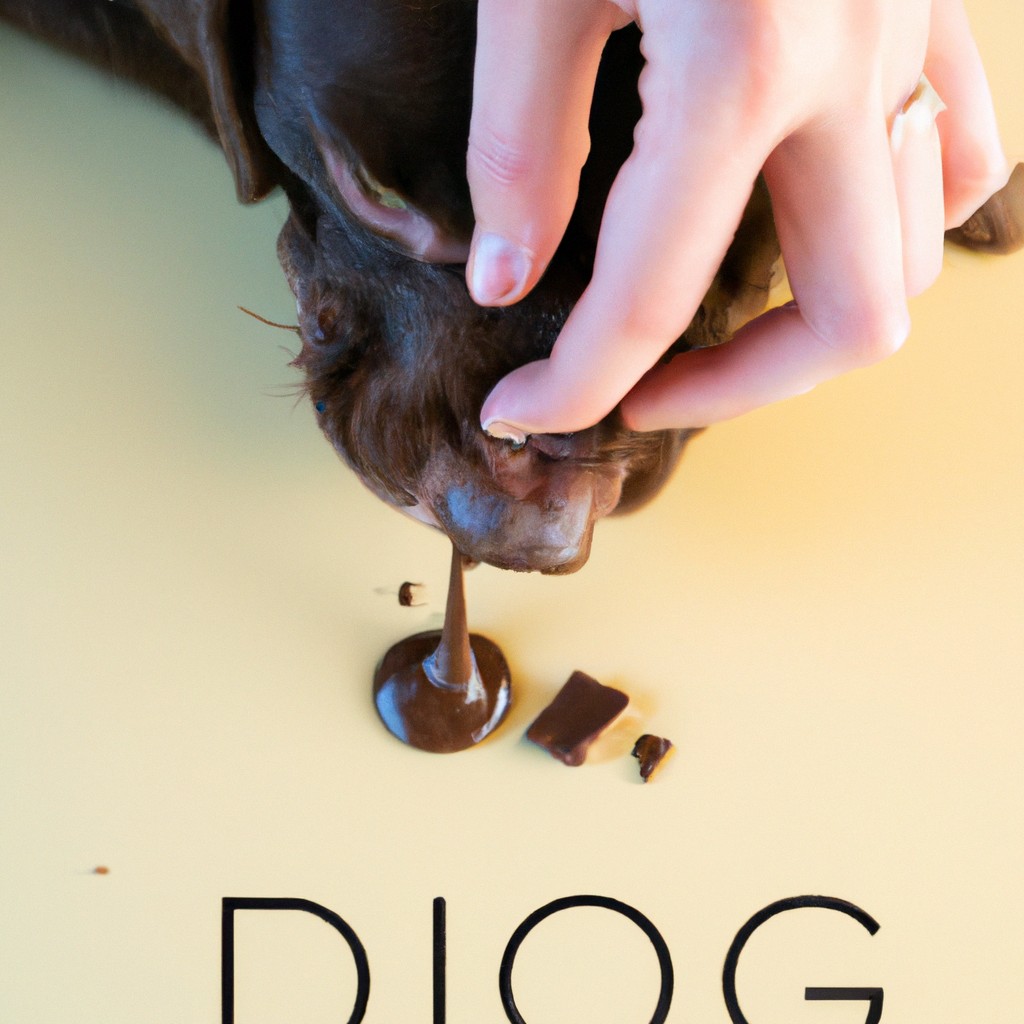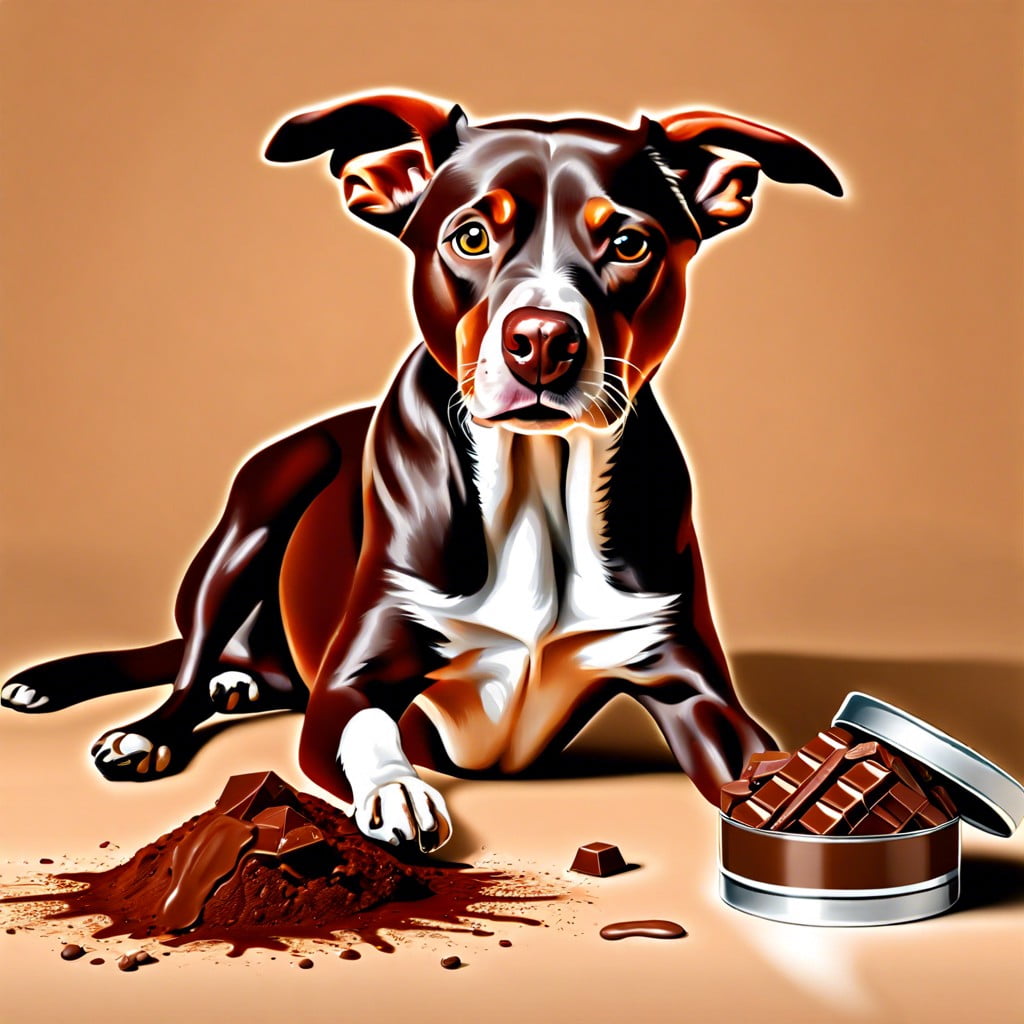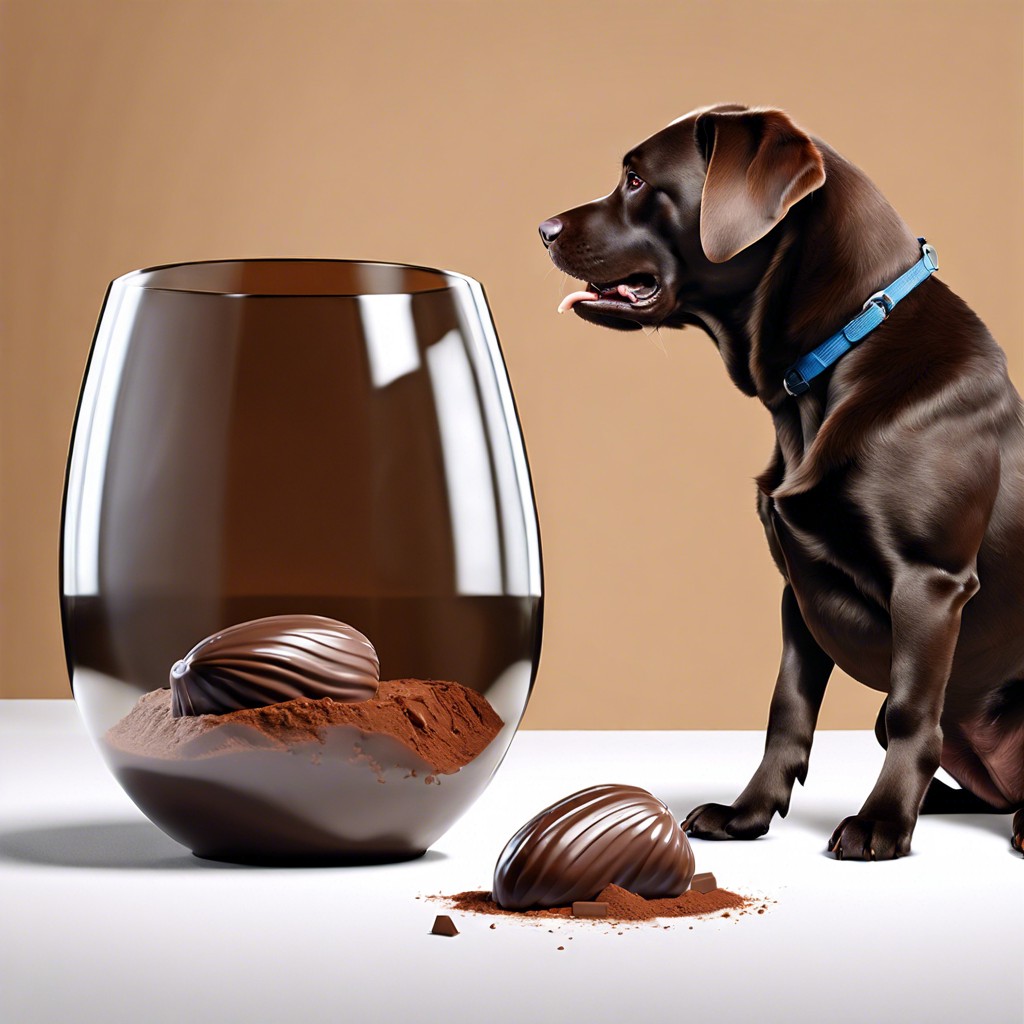Learn the safe and effective steps to induce vomiting in dogs after chocolate ingestion.
Key takeaways:
- Darker, more concentrated chocolates are more toxic to dogs.
- Calculate potential toxicity based on weight and chocolate type.
- Remove remaining chocolate and don’t attempt home remedies.
- Administer hydrogen peroxide carefully to induce vomiting.
- Contact a veterinarian for further guidance and treatment.
Inside
Recognizing Signs of Chocolate Ingestion in Dogs

If your dog exhibits restlessness, increased thirst, diarrhea, or vomiting, these could be preliminary signs that it has consumed chocolate. More severe symptoms include elevated heart rate, tremors, seizures, and collapse, which typically occur in more serious cases.
Dark chocolate and baking chocolate, which contain higher levels of theobromine and caffeine, are more toxic to dogs than milk chocolate.
The size of your dog and the type of chocolate ingested greatly influence the severity of the reaction. It’s crucial to take note of the quantity and type of chocolate your dog has eaten to accurately assess the potential risk.
Immediate Actions to Take If Your Dog Eats Chocolate
Ascertain the type and amount of chocolate ingested. Darker, more concentrated chocolates are particularly toxic.
Calculate the potential level of toxicity based on your dog’s weight and the chocolate type. There are online calculators to assist with this.
Remove any remaining chocolate from your dog’s reach to prevent further consumption.
Do not attempt home remedies or treatments without consulting a professional. Incorrect actions can exacerbate the situation.
Localize your vet’s contact information and prepare to describe the situation, including the quantity and type of chocolate consumed.
Monitor your dog closely for symptoms such as restlessness, increased heart rate, vomiting, or diarrhea while preparing to seek professional help.
Keep a sample of the chocolate wrapper or the chocolate itself, as information on the cocoa content can be crucial for the veterinarian.
Transport your dog to the veterinarian as quickly and safely as possible, particularly if the dog is showing serious symptoms or if a large quantity of chocolate was consumed.
Step-by-Step Procedure to Administer Hydrogen Peroxide
Before administering hydrogen peroxide, confirm the correct dosage with your veterinarian, typically it’s 1 teaspoon (5 ml) per 10 pounds of body weight. Use a 3% hydrogen peroxide solution, which is available at most drug stores.
1. Prepare the hydrogen peroxide and a syringe or turkey baster for administering the solution to your dog.
2. Calmly and gently restrain your dog, ensuring they are stable and comfortable.
3. Measure the appropriate amount of hydrogen peroxide.
4. Place the syringe or baster at the back of the dog’s mouth, aiming for the back of the tongue to encourage swallowing.
5. Slowly squirt the hydrogen peroxide solution into your dog’s mouth, allowing them to swallow.
6. Give your dog a small amount of water to drink after administering the peroxide.
7. Walk your dog for a few minutes to aid the hydrogen peroxide’s effectiveness in inducing vomiting.
8. Watch your dog closely for the next 15-30 minutes for vomiting. If vomiting does not occur within this time frame, consult your veterinarian before giving another dose.
When to Avoid Inducing Vomiting in Your Dog
It’s crucial to assess the situation before attempting to induce vomiting. Certain conditions warrant caution or outright avoidance of this method:
- If your dog is unconscious, semi-conscious, or showing signs of distress such as difficulty breathing, do not induce vomiting.
- Do not attempt if it has been more than two hours since the chocolate was consumed; the toxins may have already entered the bloodstream.
- If your dog has a history of heart disease or is prone to seizures, the risks may outweigh the benefits.
- Discourage inducing vomiting if your dog has already vomited spontaneously, to prevent further irritation or potential aspiration into the lungs.
- Lastly, if your dog ate a large quantity of chocolate, has already shown symptoms of chocolate poisoning, or if the chocolate contained wrappers or other materials, it’s best to seek immediate veterinary care without trying to induce vomiting.
Contacting a Veterinarian After Inducing Vomiting
Once vomiting has been successfully induced, reaching out to a veterinarian is crucial. They can provide guidance on any further treatment that may be needed and assess the risk of chocolate poisoning based on the amount and type of chocolate ingested.
Convey Details Precisely: When contacting the vet, be prepared to provide specifics – the type of chocolate, quantity consumed, and the time of ingestion.
Observe Your Dog: Share any symptoms your dog is exhibiting.
Follow-Up Care: Ask about next steps, which may include bringing your dog in for an examination or monitoring them at home.
Emergency Services: If it’s outside of normal hours, consider contacting an emergency veterinary clinic.
Preventative Advice: Inquire about ways to prevent similar incidents in the future and discuss having a pet-specific emetic on hand.
Remember, a veterinarian is trained to handle these situations and will offer the best advice for your dog’s health and well-being.




